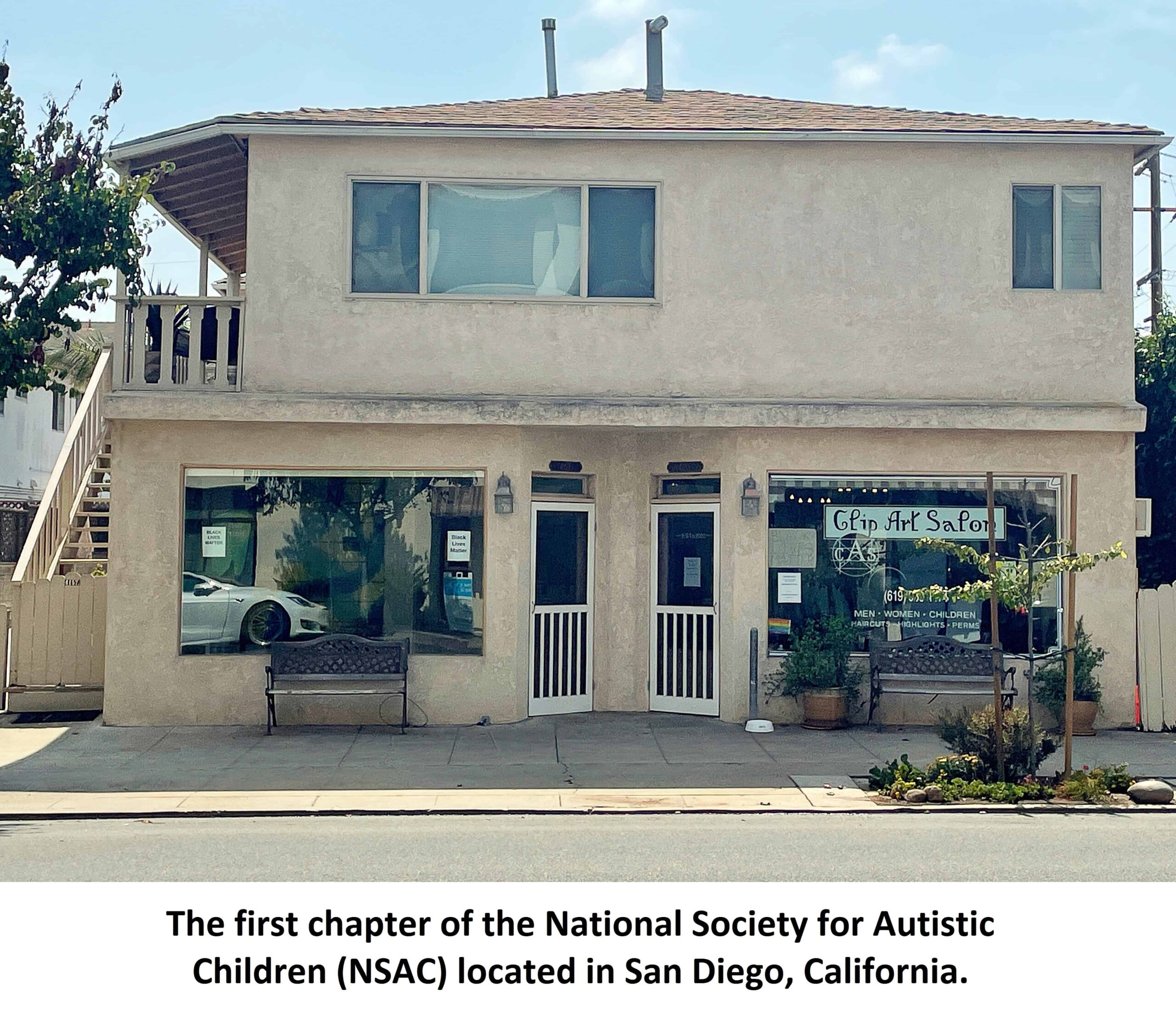
On September 16, 2021, pioneering autism advocate Dr. Ruth Christ Sullivan passed away. Dr. Sullivan was a powerful advocate for individuals with autism and their families, and together, she and Dr. Bernard Rimland changed the lives of generations of autistic individuals for the better.
I knew Dr. Sullivan quite well over the years. She introduced herself to me at the 1979 Autism Society of America conference after hearing that I was working with both Dr. Ivar Lovaas and Dr. Rimland, and we soon developed a collegial friendship that lasted for decades.
There are several published descriptions of Dr. Sullivan’s and Dr. Rimland’s early advocacy efforts in the U.S. Here is my own account, based largely on my conversations with them.
In 1959, Dr. Rimland’s son, Mark, was diagnosed with autism. Conducting a relentless search to figure out how to help his son, Dr. Rimland read every article ever written on autism and even hired interpreters to translate papers written in foreign languages. Quickly, he realized that the entire professional autism community was blaming parents for causing autism in their children.
Having just received a Ph.D. in experimental psychology, Dr. Rimland decided to write an editorial about autism, focusing on the outrageous claim that it was caused by emotionally neglectful parents. He discussed the consistencies in the descriptive literature, highlighted the lack of scientific evidence for a psychogenic theory, and argued convincingly that autism is a biological condition. He theorized, for the first time in the literature, that autism was a result of genetics and/or a genetic susceptibility to one or more environmental insults, leading in turn to some form of neurological impairment.
Over the next five years, Dr. Rimland’s paper grew quite long, and his wife suggested he consider writing a book instead. The book, titled Infantile Autism: The Syndrome and Its Implications for a Neural Theory of Behavior, was published in 1964. Immediately, it caused the entire autism field to begin focusing on biomedical causes and treatments.
In 1963, Dr. Sullivan’s son, Joseph, was diagnosed with autism at three years of age. Joe was the fifth of seven children. At this time, before the publication of Dr. Rimland’s book, Dr. Sullivan and thousands of other women were referred to as “refrigerator mothers,” because psychiatrists claimed that autism stemmed from maternal coldness and a lack of affection.
In 1964, soon after Infantile Autism was published, parents throughout the world began writing to Dr. Rimland. These letters often contained lengthy descriptions of their children and requested guidance. The next year, while spending a one-year residency at a think tank sponsored by Stanford University, Dr. Rimland realized that future research in autism needed to be distributed to parents so they could help their children. At that time, most pediatricians knew very little about autism given its relatively low prevalence rate (about 1 in 2,000, much lower than the prevalence today).
Dr. Rimland decided to write to parents with whom he was corresponding on a regular basis and tell them about his idea of forming a parent network. Around the same time, Dr. Sullivan wrote to him with a similar idea. Dr. Rimland called her immediately, and they soon began planning the details of a national support group.
Drs. Rimland and Sullivan convened a meeting in Teaneck, New Jersey in late 1965. Dr. Rimland wrote to parents living in nearby states, encouraging them to attend. The meeting was a great success, and many of those in attendance agreed to work together to establish a network of regional chapters throughout the country. The support group was initially titled the National Society for Autistic Children (or NSAC), but was later changed to the Autism Society of America (ASA) and then to the Autism Society (AS).
As Dr. Rimland recommended, one of NSAC’s primary goals was to share the latest research findings with families through its chapters. Dr. Rimland also made a commitment to establish the very first chapter in San Diego. (The Autism Research Institute is currently located across the street from the first NSAC chapter.) He then wrote to parents throughout the country and encouraged them to establish chapters in their own communities.

Around the same time, Dr. Ivar Lovaas was conducting groundbreaking research on treating children with autism at UCLA. Dr. Rimland scheduled a visit to see first-hand how behavior therapy was administered. He also made a point to
interview families whose children attended Dr. Lovaas’ clinic. Dr. Rimland was so impressed with their reports that he instructed NSAC to disseminate information on the efficacy of behavioral therapy to its chapter members.
In 1967, Dr. Rimland established the Institute for Child Behavior Research, the name of which was later changed to the Autism Research Institute (ARI). The primary mission of the institute was to support research on autism. The plan was for ARI to encourage and monitor research throughout the world and summarize the most relevant findings for NSAC/ASA members.
In 1968, Dr. Rimland produced the first documentary on autism, The Invisible Wall, which was shown to college classes throughout the country. (This was my first introduction to autism.) In the film, Dr. Sullivan gave a detailed description of her son. You can view this segment at www.InvisibleWall-RuthSullivan.com, and watch the entire documentary at www.TheInvisibleWall.com. During this same year, Dr. Sullivan established an Information and Referral Service for parents throughout the world.
Over the years, NSAC/ASA/AS and ARI gradually went their separate ways. AS continues its efforts to provide information and support to chapters throughout the country, while ARI continues to support research by awarding grants and sponsoring regional and national think tanks in addition to disseminating research findings through its quarterly science newsletter, the Autism Research Review International, books, and near-weekly webinars.
Throughout her life, Dr. Sullivan continued to be active in the autism community, both nationally and regionally. She was one of the first to advocate for services for adults with ASD in her seminal paper titled “The National Crisis in Adult Services for Individuals with Autism,” and her “Call to Action” paper was adopted as a position paper by ASA in 2001. She founded the Autism Services Center in Huntington, West Virginia, was instrumental in establishing numerous group homes, and was one of the strongest advocates for Public Law 94-142 (IDEA), which gives disabled children the right to fair and equal access to education. She and Dr. Rimland both served as technical advisors for the Academy Award-winning movie Rain Man, and Dustin Hoffman based his character in part on Dr. Sullivan’s son.
Throughout the years, Drs. Rimland and Sullivan were close friends and colleagues, and they enjoyed discussing autism-related issues before his passing in 2006. Both of them were true trailblazers, and their heroic leadership prepared the groundwork for scientific research on autism and the provision of much-needed services to those on the autism spectrum and their family members. Their dedication and tireless efforts will never be forgotten.
Stephen M. Edelson, Ph.D.
Executive Director, Autism Research Institute
This editorial originally appeared in Autism Research Review International, Vol. 35, No. 3, 2021
ARI’s Latest Accomplishments
Connecting investigators, professionals, parents, and autistic people worldwide is essential for effective advocacy. Throughout 2023, we continued our work offering focus on education while funding and support research on genetics, neurology, co-occurring medical
Understanding and Treating Autism: Book Series
A new book, titled Understanding and Treating Sleep Disturbances in Autism, is now available from Jessica Kingsley Publishers. The book is edited by ARI's executive director, Stephen M. Edelson, and past ARI
Autism Research: Standing on the Shoulders of Giants
Isaac Newton once said, “If I have seen further it is by standing on the shoulders of giants.” In the same way, our achievements in the field of autism today stem from




